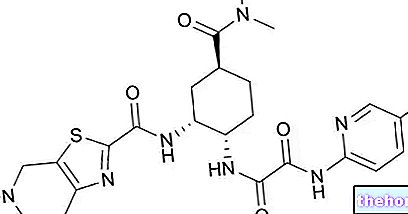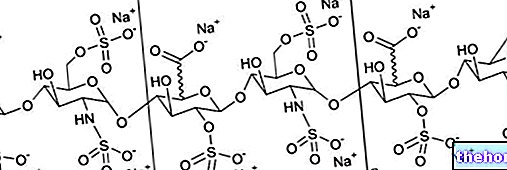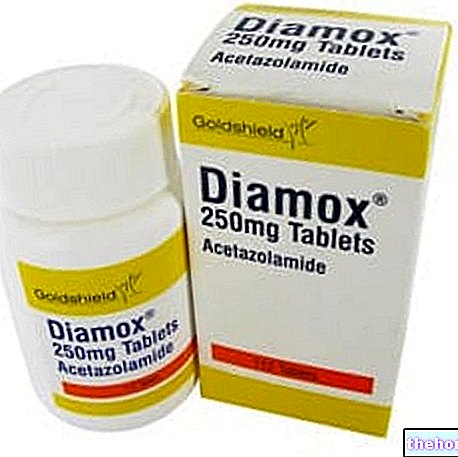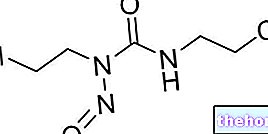
What is RotaTeq?
RotaTeq is a vaccine available as an oral solution in single-dose vials. It contains five live rotavirus strains, each of which carries a different antigen (G1, G2, G3, G4 and P1 [8]).
What is RotaTeq used for?
RotaTeq is a vaccine given to infants from six weeks of age to prevent gastroenteritis (diarrhea and vomiting) caused by rotavirus. RotaTeq is administered according to official recommendations.
The medicine can only be obtained with a prescription.
How is RotaTeq used?
RotaTeq is given as a three-dose course, at intervals of at least four weeks for each dose. The vaccine is given by pouring the vial directly into the baby's mouth. The first dose should be given between the sixth and twelfth week of life. It is preferable that the last dose is given before 20-22 weeks of life; however, all three doses should be given within 26 weeks of life (six months). RotaTeq can be administered concomitantly with other vaccines. , with the exception of the oral polio vaccine (in this case an interval of two weeks must elapse between the administration of the two vaccines).
RotaTeq can be given to premature babies as long as the pregnancy has lasted at least 25 weeks. The first dose should be given six weeks after birth.
How does RotaTeq work?
There are different types of rotaviruses responsible for gastroenteritis, depending on the antigens they carry.An antigen is a specific structure that the body can recognize as "foreign" and for which it is able to produce an antibody, which is a protein substance capable of neutralizing or destroying the antigen. RotaTeq is composed of viruses containing the antigens of some of the more common types of rotaviruses. When the child receives the vaccine, the immune system (the disease-fighting system) develops antibodies against these antigens, helping to prevent infections caused by rotaviruses in the environment that are carriers of the same or very similar antigens.
How has RotaTeq been studied?
The effects of RotaTeq were first tested in experimental models before being studied in humans. Overall, the RotaTeq studies involved more than 72,000 babies, including around 2,000 premature babies. About half of the children were vaccinated and the remaining half were given a placebo (i.e. a dummy treatment). The efficacy of the vaccine was studied in about 6,000 children among all those involved. The main study was conducted on a broad spectrum (over 70,000 children involved), in order to verify whether the vaccine was capable of causing a serious complication. extremely rare, intussusception, a condition in which part of the intestine slips into another intestinal tract, causing an obstruction (blockage). The effectiveness of the vaccine was evaluated on the basis of the number of children who they contracted rotavirus gastroenteritis during the next "rotavirus season" (ie the period of the year when rotaviruses circulate causing infections; usually these are the coldest months, ie from winter to early spring).
What benefit has RotaTeq shown during the studies?
In the nearly 6,000 children in whom the efficacy of the vaccine was studied, the number of cases of rotavirus gastroenteritis, caused by viruses with the same antigens present in the vaccine, decreased after vaccination with RotaTeq: among children vaccinated with RotaTeq , in fact, 82 cases (of which one serious) of rotavirus gastroenteritis, compared to 315 cases found among subjects who had been administered placebo (of which 51 serious). The study also showed that, in the case of children vaccinated with RotaTeq, fewer hospital admissions or urgent emergency room visits for rotavirus gastroenteritis.
What is the risk associated with RotaTeq?
In the main study, in which approximately 35,000 children received RotaTeq and 35,000 placebo, in six cases intussusception occurred within 42 days following the administration of a dose of RotaTeq, compared with five in the children treated. with placebo. The most common side effects (seen in more than 1 in 10 patients) are pyrexia (fever), diarrhea and vomiting. For the full list of side effects reported with RotaTeq, see the package leaflet.
RotaTeq must not be used in children who may be hypersensitive (allergic) to the active substance or any of the other substances, or who have shown signs of allergy following a dose of RotaTeq or another rotavirus vaccine. RotaTeq should not be given to children with a history of intussusception or with intestinal problems that could predispose them to this complication, or to children with a weakened immune system. For the complete list of restrictions on use, see the package leaflet.
Like other vaccines, the use of RotaTeq may carry a risk of respiratory apnea (short pauses to stop breathing) in very premature infants. The breathing of these infants should be monitored for three days following vaccination.
Why has RotaTeq been approved?
The Committee for Medicinal Products for Human Use (CHMP) concluded that based on the studies carried out, it appears that RotaTeq protects against rotavirus gastroenteritis caused by specific types of the virus. The risk of intussusception following vaccination, although contained, cannot be excluded; therefore, this eventuality will be carefully monitored after the vaccine is placed on the market.
The Committee decided that RotaTeq's benefits are greater than its risks in vaccinating infants from six weeks of age to prevent rotavirus gastroenteritis and therefore recommended that it be given marketing authorization.
What measures are being taken to ensure the safe use of RotaTeq?
The company that makes RotaTeq will test for some of the vaccine's undesirable effects after its release on the market, in particular undesirable effects affecting the digestive system.
Other information about RotaTeq:
On June 27, 2006, the European Commission granted Sanofi Pasteur MSD SNC a "Marketing Authorization" for RotaTeq, valid throughout the European Union.
For the full version of the RotaTeq EPAR, click here.
Last update of this summary: 12-2007.
The information on RotaTeq - vaccine published on this page may be out of date or incomplete. For a correct use of this information, see the Disclaimer and useful information page.




























